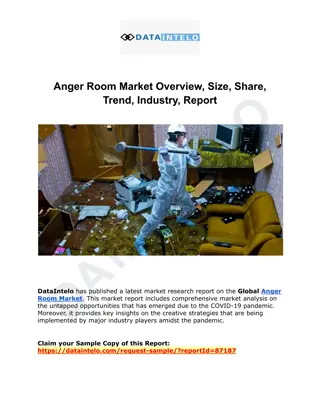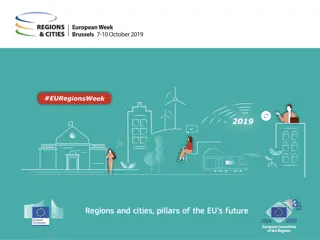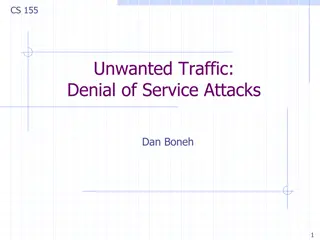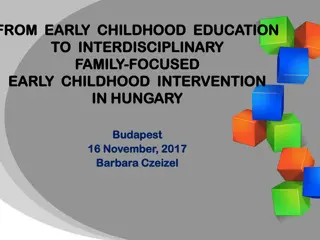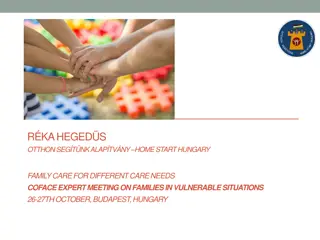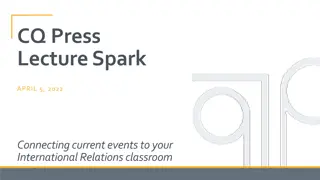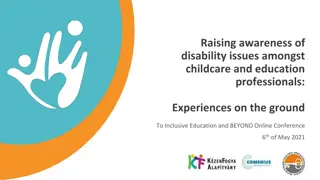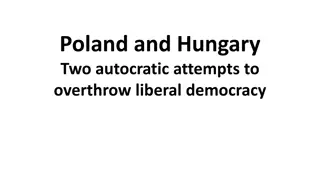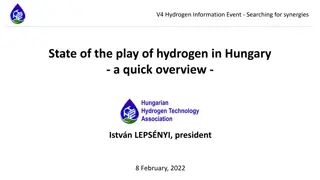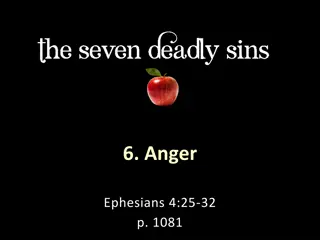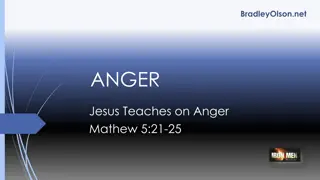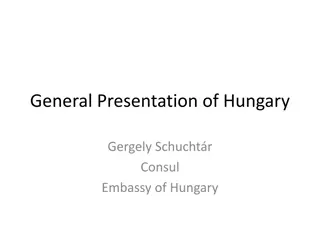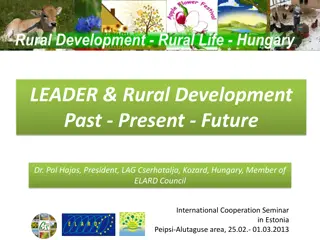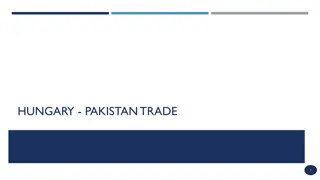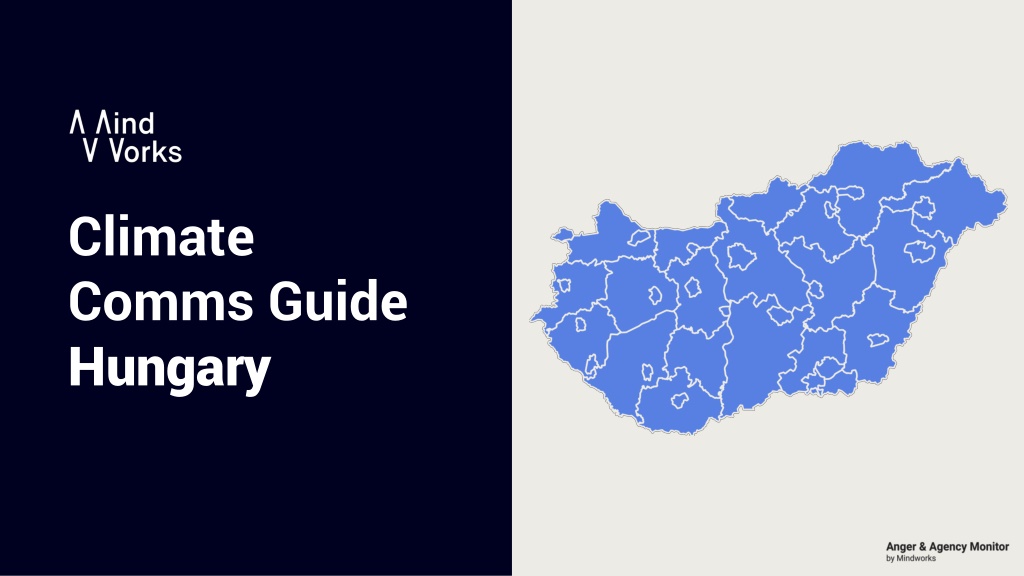
Effective Climate Communication Strategies for Hungary
Learn how to tailor your climate communication strategies for Hungary based on audience insights. Understand the importance of economic well-being narratives, connecting climate issues to frustrations like corruption, and empowering the Hungarian population in campaigns.
Download Presentation

Please find below an Image/Link to download the presentation.
The content on the website is provided AS IS for your information and personal use only. It may not be sold, licensed, or shared on other websites without obtaining consent from the author. If you encounter any issues during the download, it is possible that the publisher has removed the file from their server.
You are allowed to download the files provided on this website for personal or commercial use, subject to the condition that they are used lawfully. All files are the property of their respective owners.
The content on the website is provided AS IS for your information and personal use only. It may not be sold, licensed, or shared on other websites without obtaining consent from the author.
E N D
Presentation Transcript
Climate Comms Guide Hungary
www.mindworkslab.org Signal and Noise In all your work, you are contributing to a wider narrative in society. These narratives shift how people think and behave, and in the polycrisis they can change quickly. The strongest narratives are made up of clear and sharp signals. They cut out unnecessary information or noise and are more likely to be received by our audiences. Imagine a lighthouse on the shore: a sailor can use its light to navigate, while a tourist or farmer may just see it as a bright light without understanding its purpose. If the coast were filled with many bright lights, it would be hard for the sailor to know which one to follow and navigate correctly. It's crucial to understand how your audience receives your signals. The Anger and Agency Monitor evaluates people's emotions and beliefs to predict their reactions to specific messages. By using these insights, you can select the most appropriate information and design campaigns effectively to engage your audience. How to use this doc 2
www.mindworkslab.org How to use this document This document contains, country-specific Dos and Don ts based on detailed audience insights from the Anger & Agency Monitor. They allow you to create stories that feel familiar to your audience (confirmation bias) increasing their chance of acceptance. You find out more details about the data behind these recommendations in the full country report. Understanding how your audience will perceive certain information will allow you to design the right signals. If you d be interested in testing some of these insights, don t hesitate to reach out to Mindworks at hello@mindworkslab.org Dos and Don ts 3
www.mindworkslab.org DO Hungarians are deeply concerned about economic well- being, which should be at the center of your climate communication. Narratives that blame economic elites, such as the fossil fuel industry, resonate well. Highlighting local solutions like community solar power plants and heat pumps can demonstrate how these projects can reduce energy bills and provide economic stability, countering elite-driven inflation and corruption. Design solutions that focus on economic well-being Find out more here Next 4
www.mindworkslab.org DO Hungary is experiencing high levels of anger about inflation (71%), government corruption (68%), and incompetent leadership (57%). Although anger about climate change is low (43%), connecting the climate crisis to other sources of frustration such as corruption or economic instability can strengthen your message. For instance, link environmental pollution and its economic impacts to climate narratives. Leverage anger about corruption and incompetence Find out more here Next 5
www.mindworkslab.org DO Hungarians feel a strong sense of powerlessness (31%) and some of the lowest levels of political action. Campaigns should focus on empowering people by highlighting successful community-based actions, such as local energy cooperatives or flood prevention measures. Showcase examples where individuals and communities have taken control of their economic and environmental futures to demonstrate that change is possible. Build agency to counter powerlessness Find out more here Next 6
www.mindworkslab.org DON T Hungary already has high levels of worry (48%), and excessive focus on crisis without solutions can deepen this sentiment. Instead of exacerbating worry or promoting a doomsday narrative, focus on showing achievable actions and success stories where communities have regained control over their economic and environmental well-being. Overload people with more worry Find out more here Next 7
www.mindworkslab.org DO Hungary s empathy levels have been declining, but there is still potential to promote narratives of collective action. Campaigns that emphasize solidarity, cooperation, and community-driven solutions can help counter societal fragmentation. Highlight how climate solutions like clean energy and flood protection can benefit everyone, fostering unity and collaboration. Foster empathy and cooperation Find out more here Next 8
www.mindworkslab.org DO Climate change is perceived as a secondary issue for many Hungarians, with only 10% identifying it as a major crisis. Campaigns should tie climate solutions to more immediate concerns like extreme weather events, air pollution, and their economic impacts. Focus on short- term benefits such as improving air quality or protecting homes from flooding. Address imminent problems first Find out more here Next 9
www.mindworkslab.org DO A small segment of Hungary s population (13%) is fully aware of climate change and not in denial. Use this group as early adopters to drive your campaigns and set examples for others. They can serve as the innovators who promote solutions like clean energy and community- driven initiatives, helping to normalize climate-friendly actions. Engage climate action early-adopters Find out more here Next 10
www.mindworkslab.org DO Hungary s anger culture is introverted, with people less likely to express anger publicly. Campaigns should create safe, familiar spaces for people to share their frustrations and experiences such as community meetings or informal group settings. Focus on constructive actions rather than confrontational approaches. Cater to Hungary s introverted anger culture Find out more here Next 11
www.mindworkslab.org The Glossary Anger Types Anger is not a one dimension emotion, it can be broken down into different anger types such as Constructive, Toxic or restrained. This determines if the anger can be used to drive social change (Constructive) or is more likely to be violent, vengeful and dangerous (Toxic). Agency Agency is the sense of control you feel over your actions, and the capacity to influence your own life (personal agency) or that of your political context (political agency). Agency can only be achieved when people can take action and see the impact it has. Actions without impact leads to powerlessness. Climate Denial We use a broad definition of climate denial that includes partial denial such as believing that climate change is exaggerated or that personal action is pointless. It also includes optimistic denial , for example those who believe that we will adapt or that technology will fix things . These types of denial can act as barriers to collective action and we need to find ways to dissolve them. Signal and Noise "Signal or noise" emphasises focusing on core, impactful messages (signal) that align with key objectives while cutting through irrelevant or distracting information (noise). This distinction ensures communication is clear and resonates with the target audience, avoiding confusion and distraction that dilute the message. Scarcity Mindset One of the key narrative shifts in the polycrisis is from abundance (we all grow rich together) to scarcity (there are limited resources to go around). Depending on your audience s values scarcity narratives could either be built around competition (every person for themselves) or collectivism (we share what little we have). 12
www.mindworkslab.org Want to know more? You can explore the deeper reasoning behind these Dos and Don ts below as well as explore all the data from the Anger & Agency Monitor in the country report.. If you d be interested in testing some of these insights don t hesitate to reach out to Mindworks at hello@mindworkslab.org Download this document as a PDF 13

